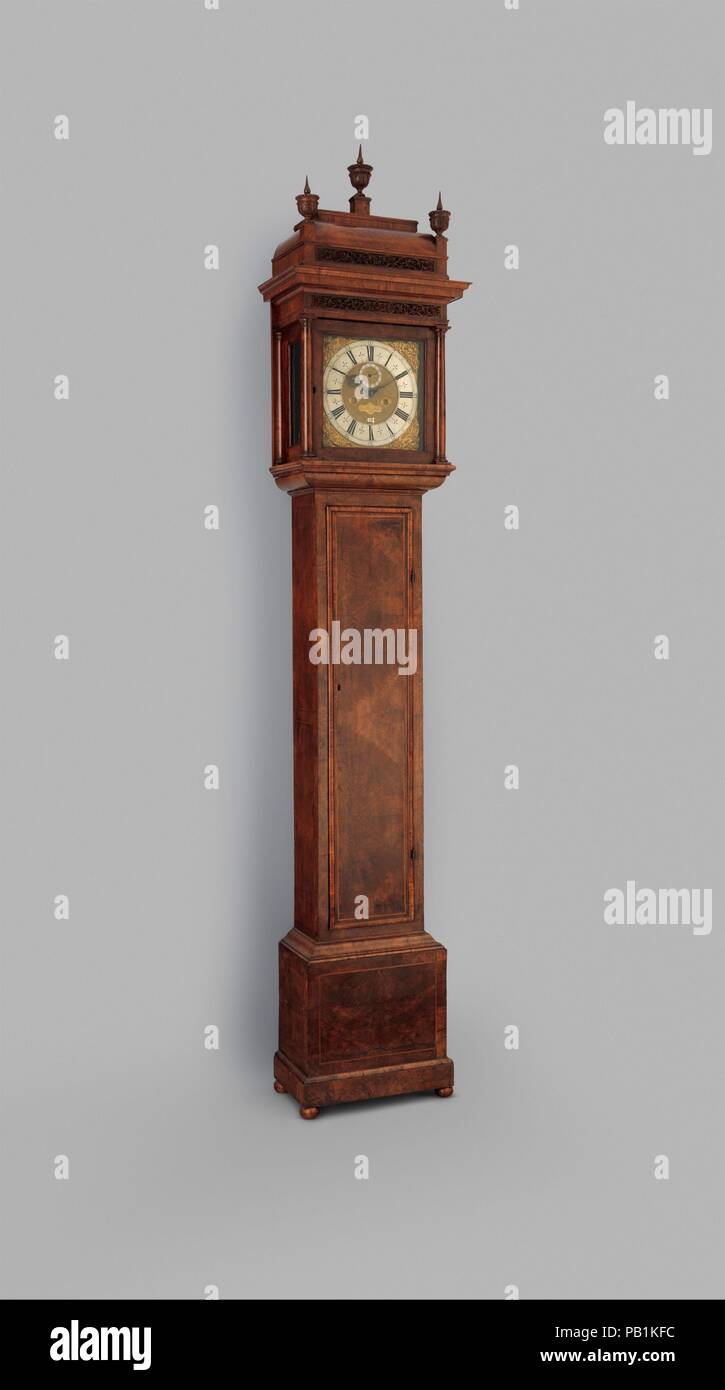Longcase clock with calendar. Culture: British, London. Dimensions: Overall: 94 × 19 × 10 1/2 in. (238.8 × 48.3 × 26.7 cm). Maker: Clockmaker: Thomas Tompion (British, 1639-1713). Date: ca. 1700. This eight-day clock with anchor escapement and 11.4 seconds-beating pendulum is numbered 344. Although the seconds-beating long pendulum (approximately 39 inches in length) became standard for longcase clocks in the late seventeenth century, a few clockmakers experimented with longer pendulums. It proved remarkably difficult, however, to make them reliable, and only the best English clockmakers were

Image details
Contributor:
Album / Alamy Stock PhotoImage ID:
PB1KFCFile size:
29.3 MB (428.7 KB Compressed download)Releases:
Model - no | Property - noDo I need a release?Dimensions:
2391 x 4283 px | 20.2 x 36.3 cm | 8 x 14.3 inches | 300dpiPhotographer:
AlbumMore information:
This image could have imperfections as it’s either historical or reportage.
Longcase clock with calendar. Culture: British, London. Dimensions: Overall: 94 × 19 × 10 1/2 in. (238.8 × 48.3 × 26.7 cm). Maker: Clockmaker: Thomas Tompion (British, 1639-1713). Date: ca. 1700. This eight-day clock with anchor escapement and 11.4 seconds-beating pendulum is numbered 344. Although the seconds-beating long pendulum (approximately 39 inches in length) became standard for longcase clocks in the late seventeenth century, a few clockmakers experimented with longer pendulums. It proved remarkably difficult, however, to make them reliable, and only the best English clockmakers were successful. This example, measuring about 60 inches in length, produces a slow tick and necessitated a seconds dial with only four divisions of each five-minute interval. Tompion's fine workmanship and ingenious designs contributed greatly to the fame of English clockmaking. For another Tompion clock with an unusual movement, also in the Museum's collection, see 1999.48.2, known as the Graves Tompion. Museum: Metropolitan Museum of Art, New York, USA.